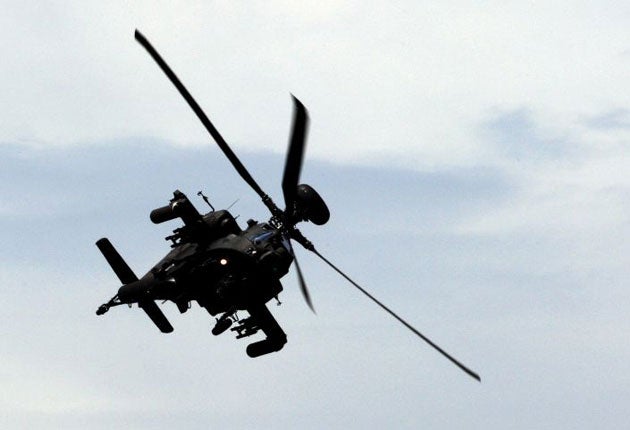The fearsome Apache helicopter is a formidable weapon on the modern battlefield and one of the most advanced military aircraft in the world.
With its combination of extreme manoeuvrability and massive firepower, it has acquired a deadly reputation.
Capable of a top speed of 205mph, it can fly day and night in all weathers, enabling the Army to launch a precise and lethal strike on the enemy at any time.
But while the US version was credited with destroying more than 500 Iraqi tanks in the 1991 Gulf War, the Apache has since seen a series of incidents which stripped away some of its gloss.
Described as "bodyguards" for larger Chinook helicopters, Apaches are flown in pairs and fire weapons ranging from Hellfire missiles to bullets.
Originally a Cold War aircraft, it evolved over the decades to develop almost indomitable capabilities.
The first British model - built by AgustaWestland based in Yeovil, Somerset - came into service with the Army Air Corps (AAC) in 2001.
In Helmand province, Afghanistan, it has been employed to hunt and kill Taliban fighters, gather intelligence and provide cover.
With its 30mm chain gun and payload of rockets, it packs a devastating punch.
It is fitted with high-tech radar and imaging equipment which allows the two-man crew to pinpoint targets with great accuracy.
The helicopter - powered by twin Rolls-Royce engines which give it a range of 295 miles - was involved in a daring rescue mission in Afghanistan in January 2007, when four British servicemen strapped themselves to the outside of two Apaches to recover the body of a dead comrade in Helmand.
But concerns have been raised over its use.
In 1999, the Americans deployed 24 Apaches to the Balkans during the Kosovo conflict amid predictions that it could prove the battle-winning weapon.
The reality turned out to be rather different.
The helicopters were held back in friendly Albania amid fears in the Pentagon that their relatively slow speed could leave them vulnerable to attack by shoulder-launched SAM missiles and even small arms fire.
To make matters worse, two Apaches crashed on routine training flights with the loss of two crew.
In 2002, there were reports that some were forced out of action in Afghanistan by small arms fire from al Qaeda and Taliban fighters on the ground.
A few were so badly damaged they had to be withdrawn from combat for repairs.
The next variant of the Apache developed problems firing its Hellfire anti-tank missiles.
Despite this, the rugged craft continues to provide essential support.
The AAC now has a fleet of 67 Apaches based at Wattisham Airfield in Suffolk, where Prince Harry has been training after qualifying as an Apache pilot. Each measures 57ft in length, stands 16ft high and has a main rotor diameter of 48ft.
This week, the AAC marked the 100,000th flying hour in its Apaches.
The achievement, reached during a test flight in Afghanistan, is equivalent to a single helicopter staying aloft for 11-and-a-half years.

Join our commenting forum
Join thought-provoking conversations, follow other Independent readers and see their replies
Comments